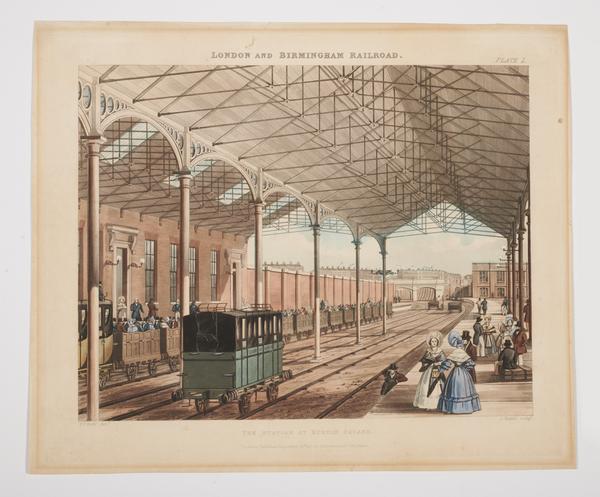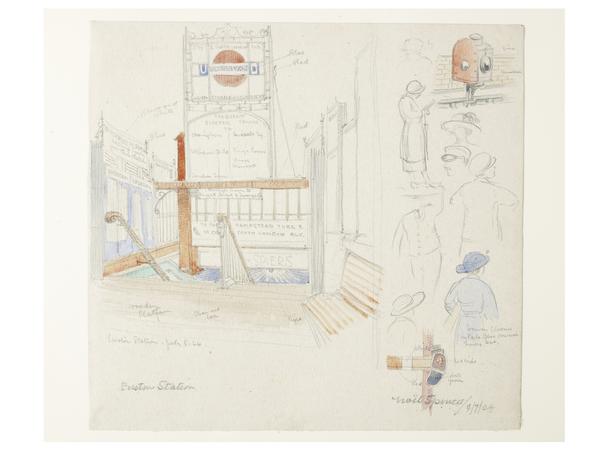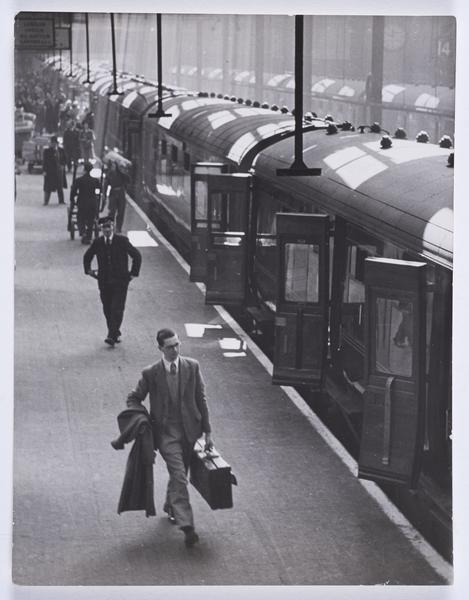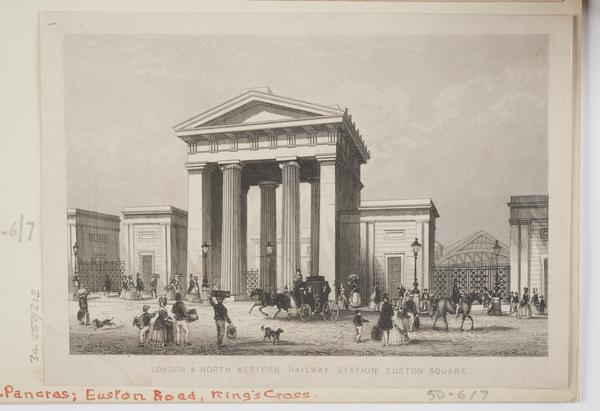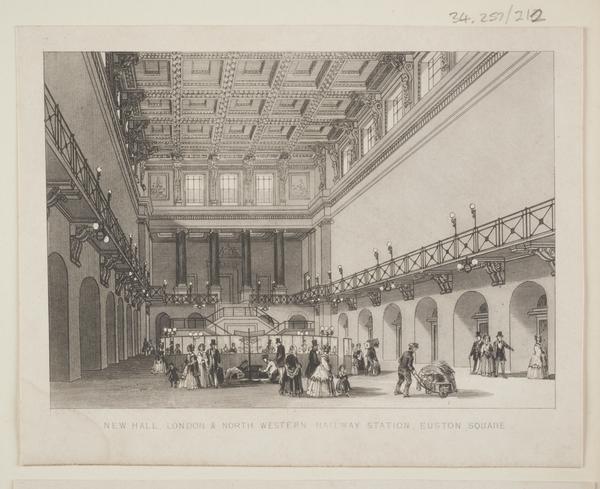Euston: London's most divisive station
You’d think there’d be more love shown towards London’s oldest railway terminus. But Euston’s nearly 200-year-long history has been coloured by criticism of its architecture.
Camden
Opened 1837

The station many Londoners love to loathe
A grand double staircase. Artwork on the walls. A stone gateway resembling the entrance to a Roman temple. Picture this in your mind’s eye and it’s hard to believe that it once described Euston railway station.
Euston, in Camden, is London’s gateway to the north-west of the country. First opened in 1837, then built up over the following decades, this railway terminus was once well known for its grandeur. Its original Victorian architecture survived well into the 20th century.
But in the 1960s, the old building was demolished to make way for the sleek – and to some, soulless – concrete rectangle we see today. While it seemed modern at the time, in the decades since, many rail passengers have complained that it’s ugly, outdated and prone to overcrowding.
Euston is London’s oldest mainline terminus
Most of London’s main stations, like King’s Cross and Paddington, were opened in the mid-1800s. This was the golden age of railway building by private companies. In the 1840s, the price of shares in railway companies doubled in just two years, in what was called the ‘railway mania’.
Euston was the first to be built, and was owned by the London and Birmingham Railway in 1837. It linked the industrial powerhouse of the Midlands with the financial heart of the capital.
“The shock of a great earthquake”
Charles Dickens, Dombey & Son, 1848
The construction of the new station devastated the surrounding area and made many families homeless. The author Charles Dickens wrote about the arrival of the railway in Camden Town in his 1848 novel Dombey and Son. He compared the building work to “the shock of a great earthquake”.
The print above from our collection shows what Euston looked like when it opened. There were only two platforms: one for arrivals, one for departures. Third-class passengers travelled in open carriages, exposed to the elements and engine smoke.
Outside the station stood the ‘Euston Arch’. Designed by architect Philip Hardwick, it wasn’t exactly an arch, but a monumental Roman-inspired stone gateway supported by four huge columns. It was designed to be a symbol of Britain’s industrial power.
Until 1844, trains were attached to a rope and hauled up the steep incline out of Euston. A fixed, steam-powered winding engine in Camden town did the pulling. From there, steam locomotives took the trains onwards on their journey.
Old Euston and its Great Hall
The station was expanded over the 1800s. In 1839, two hotels were built on either side of the Euston Arch. They were the first of many hotels in Britain to be owned by a railway. New facilities like hotels, public toilets, refreshments and bookstores represented the growing popularity of train travel in Britain for both business and leisure.
In 1849, the opulent Great Hall opened to the public, designed by Philip Charles Hardwick, the son of Euston’s original architect. The hall housed a new waiting room and concourse for passengers, as well as offices and meeting rooms for the railway company.
The impressive architecture of the Great Hall brought glamour to passengers’ journeys. There was a diamond-shaped double staircase, classical architectural details like columns, and plaster reliefs showing cities along Euston’s rail routes. Floor to ceiling, the hall measured an impressive 19 metres tall.
The Daily News reported on the “excellent taste” of the new station, and stated that it was “a new era in railway history”.

Euston’s Great Hall.
As demand for rail travel grew over the following decades, so did the station. By the 1890s, Euston had a total of 15 platforms: 14 for passengers, and a further one for transporting parcels.
The new Euston station opened in 1963
Steam trains began to be phased out in Britain after the Second World War (1939–1945). British Rail, the government-owned company that ran most of Britain’s rail network, decided to rebuild Euston as part of the electrification of the West Coast Main Line, which connects the station with the north west.
A tangle of tracks and tunnels restricted expansion north of Euston. Instead, the new development demolished the old Victorian station to the south. Between 1961 and 1962, the Great Hall, the hotels and the massive Euston Arch were swept away, despite protests from architectural and cultural organisations and public figures like poet John Betjeman.
“Simplicity is the keynote in the design”
British Rail
The new Euston, opened in 1968 by Queen Elizabeth II, was designed to be a modern monument to a new phase of rail travel.
“Simplicity is the keynote in the design,” one British Rail pamphlet read. The station had a wide open concourse, buffets and bars, plus a travel centre where you could book train tickets, ferry services and hotel accommodation all in one place. This was an “entirely new concept in passenger facilities”, according to British Rail.
Euston’s rushes, crushes and HS2 woes
Euston hasn’t changed much since it was rebuilt in the 1960s. Some like it this way. It may be less glamorous than its Victorian counterpart, but it’s certainly more spacious and open. If you look up in the concourse, you can see the original smooth concrete ceiling, which gives it an industrial look.
But this modernist station has also had plenty of criticism thrown its way. Euston has been widely mocked as ugly and outdated – London’s “most hideous” and “most horrible” station, according to the papers.
“Euston is a mess”
Sadiq Khan, 2024
The station has also struggled with overcrowding. It’s been slammed for announcing platform numbers minutes before departure, leading to large groups of people rushing at once to catch their train. In 2024, the mayor of London Sadiq Khan told the BBC: “Euston is a mess. If you use Euston on a daily basis, the congestion, the platforms, the screens, the concerns of danger.”

Euston in 2024.
There have been plans to redevelop the area over the years. The idea of turning Euston into the terminus for the High Speed 2 (HS2) line to Birmingham has been in the works for a while. But the cost of this troubled project has skyrocketed since it was first announced in 2009. In 2023, the government paused work to build the HS2 terminus at Euston. For now, the station remains the same.






